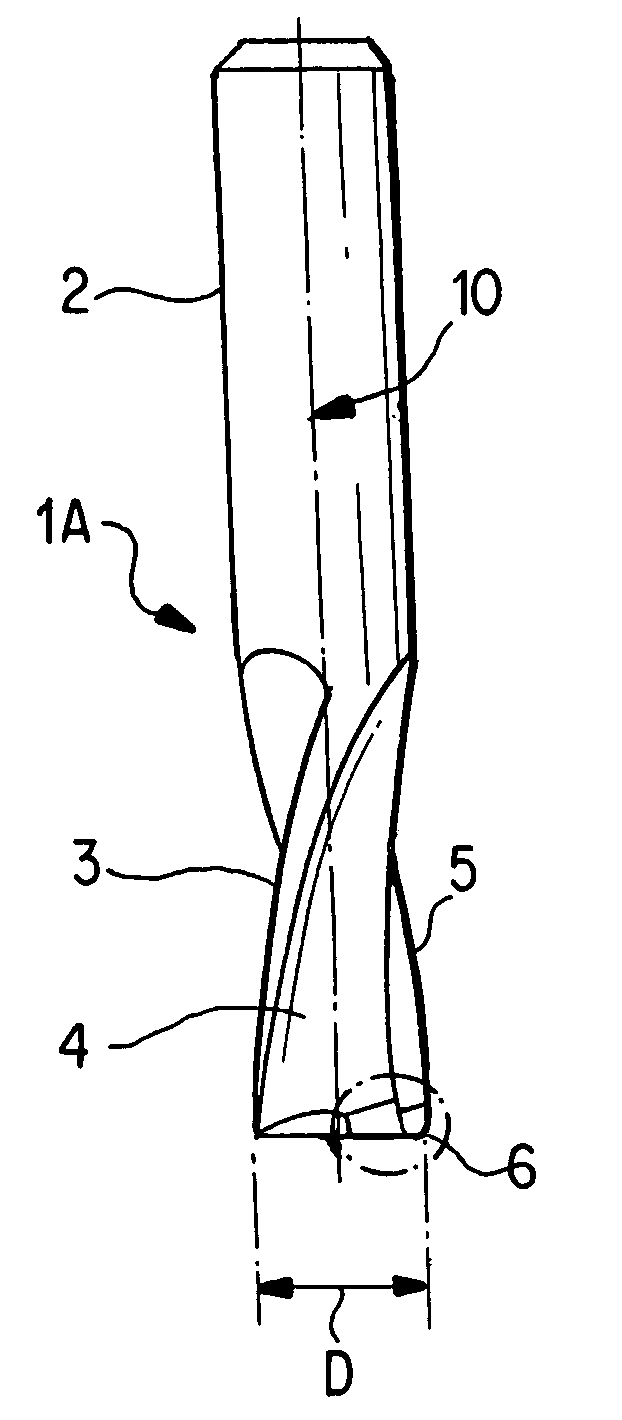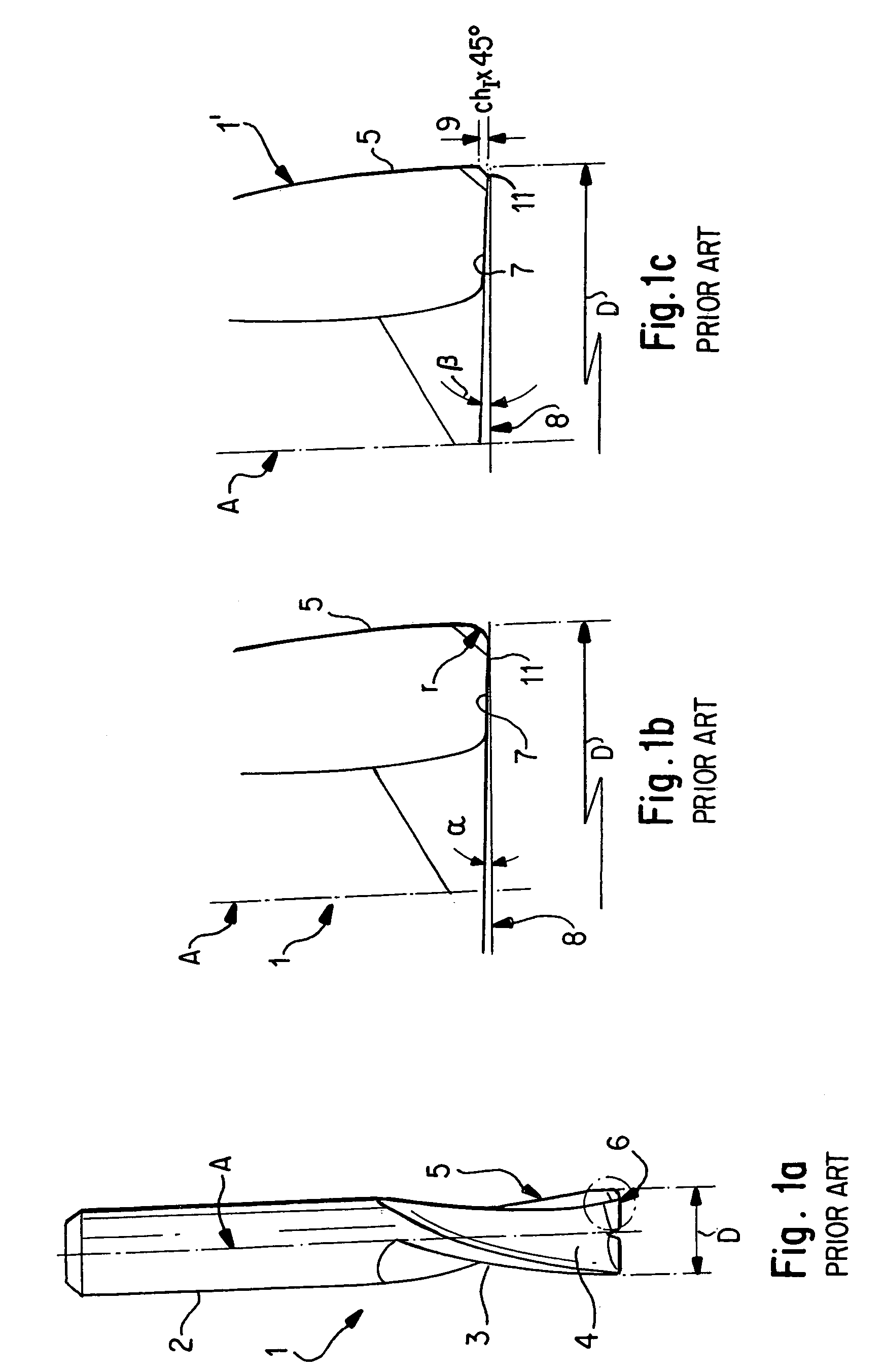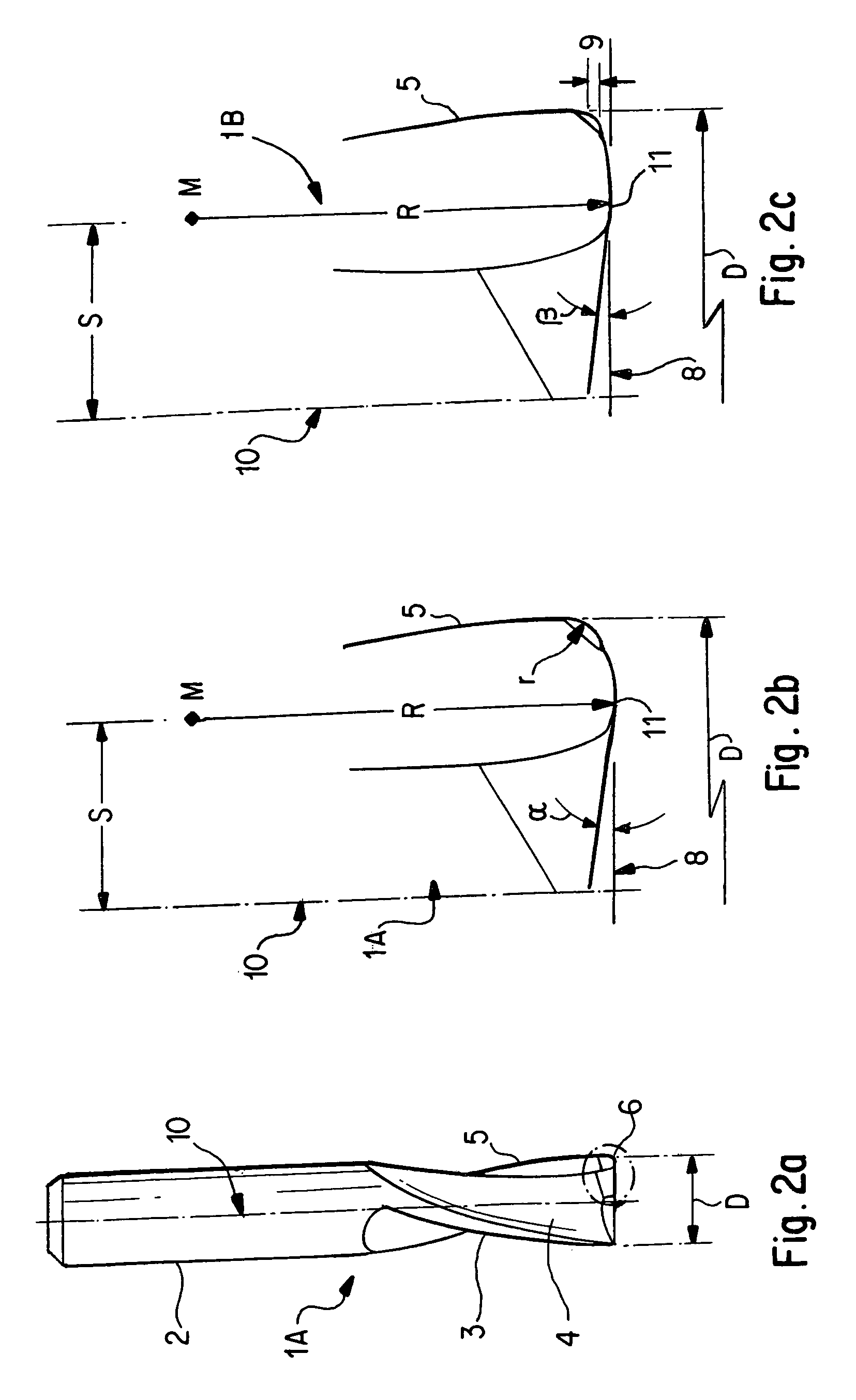Shank milling cutter having a wiper radius
a technology of shank and milling cutter, which is applied in the direction of metal-working equipment, metal-working apparatus, milling equipment, etc., can solve the problems of longer machining time and higher cost, and achieve the effect of good surface machining and marked improvement of tool li
- Summary
- Abstract
- Description
- Claims
- Application Information
AI Technical Summary
Benefits of technology
Problems solved by technology
Method used
Image
Examples
Embodiment Construction
[0032]FIG. 1a shows a side view of a prior art end shank milling cutter 1 comprising a shank portion 2 and a cutting portion 3. The shank portion 2 is here in the form of a cylindrical shank. It will be appreciated however that it is also possible to use all other shank shapes, such as for example a Morse taper shank, a steep-angle taper shank, a Weldon shank or a whistle notch shank. Here the cutting portion 3 has two major cutting edges 5 which are separated from each other by two spiral flutes 4. Peripheral surface sections of the cutting portion situated between the flutes define a cylindrical envelope surface of the cutting portion. The major cutting edges are provided at the peripheral surface of the cylindrical cutting portion 3. The end faces of the cutting portion have the minor cutting edges 7. The milling cutter has an end diameter D, as shown in FIG. 1a.
[0033]FIGS. 1b and 1c show respective configurations of a circled portion of the cutting edge corner of FIG. 1a.
[0034...
PUM
| Property | Measurement | Unit |
|---|---|---|
| angle | aaaaa | aaaaa |
| angle | aaaaa | aaaaa |
| clearance angle | aaaaa | aaaaa |
Abstract
Description
Claims
Application Information
 Login to View More
Login to View More - R&D
- Intellectual Property
- Life Sciences
- Materials
- Tech Scout
- Unparalleled Data Quality
- Higher Quality Content
- 60% Fewer Hallucinations
Browse by: Latest US Patents, China's latest patents, Technical Efficacy Thesaurus, Application Domain, Technology Topic, Popular Technical Reports.
© 2025 PatSnap. All rights reserved.Legal|Privacy policy|Modern Slavery Act Transparency Statement|Sitemap|About US| Contact US: help@patsnap.com



